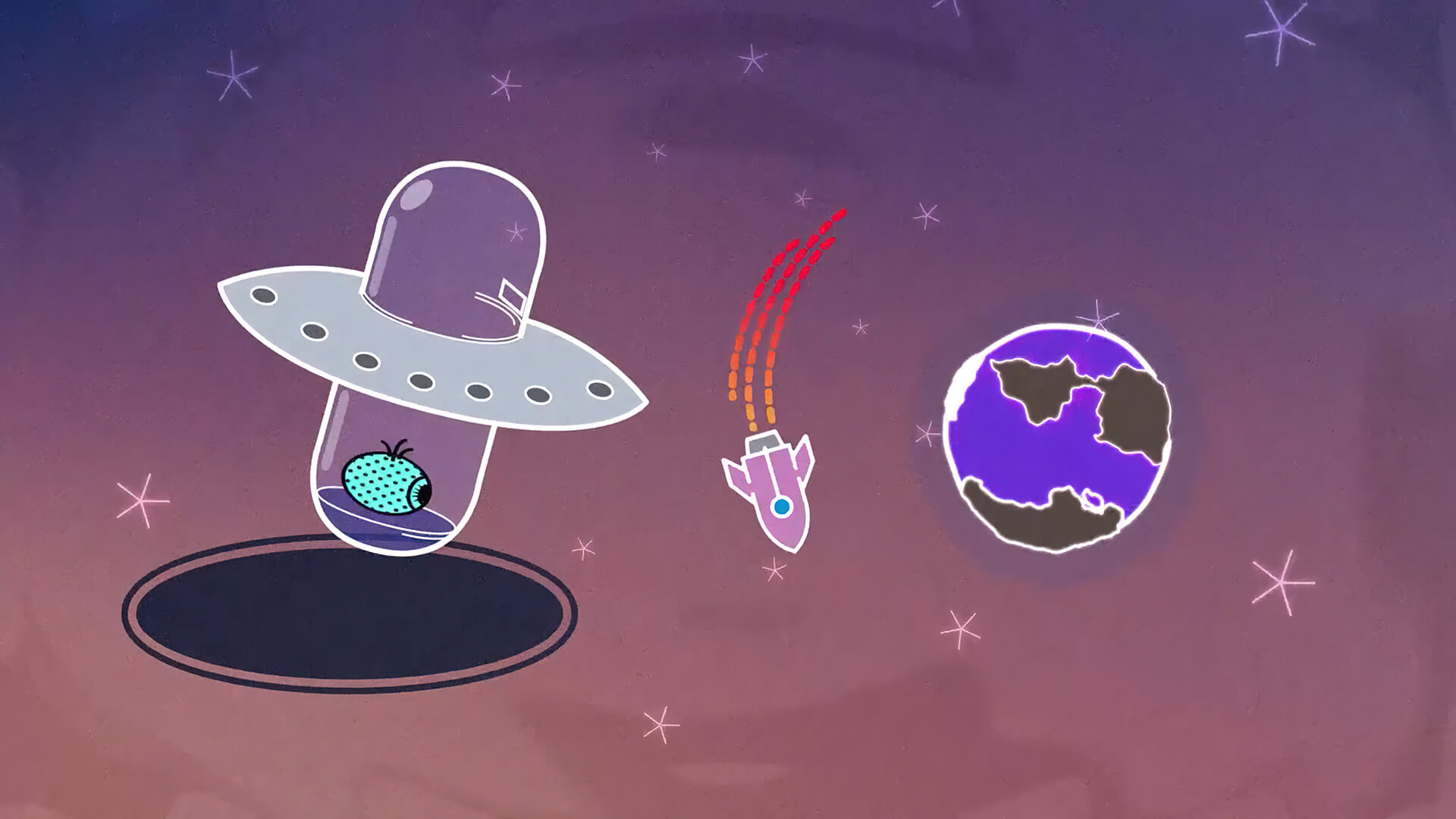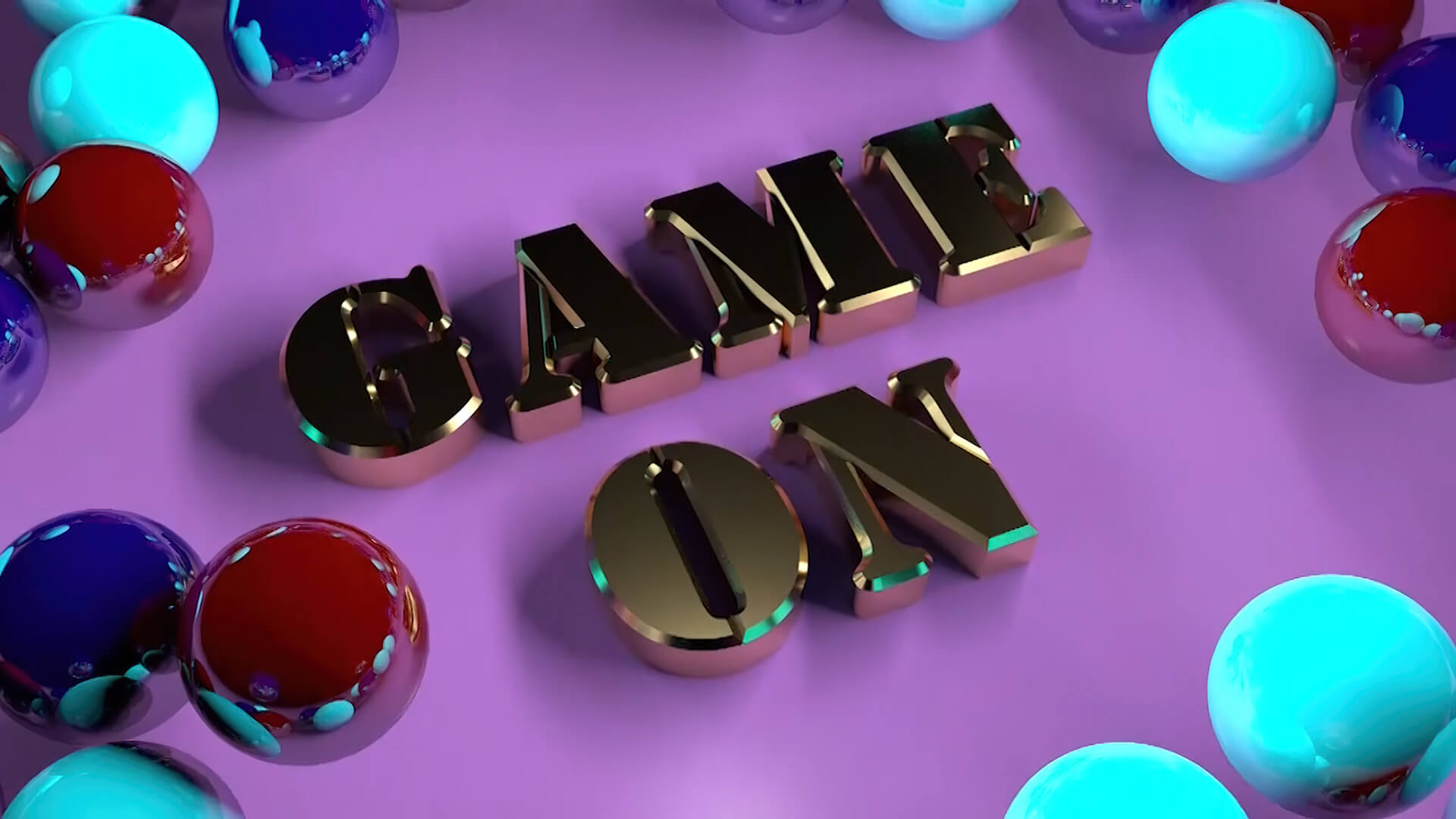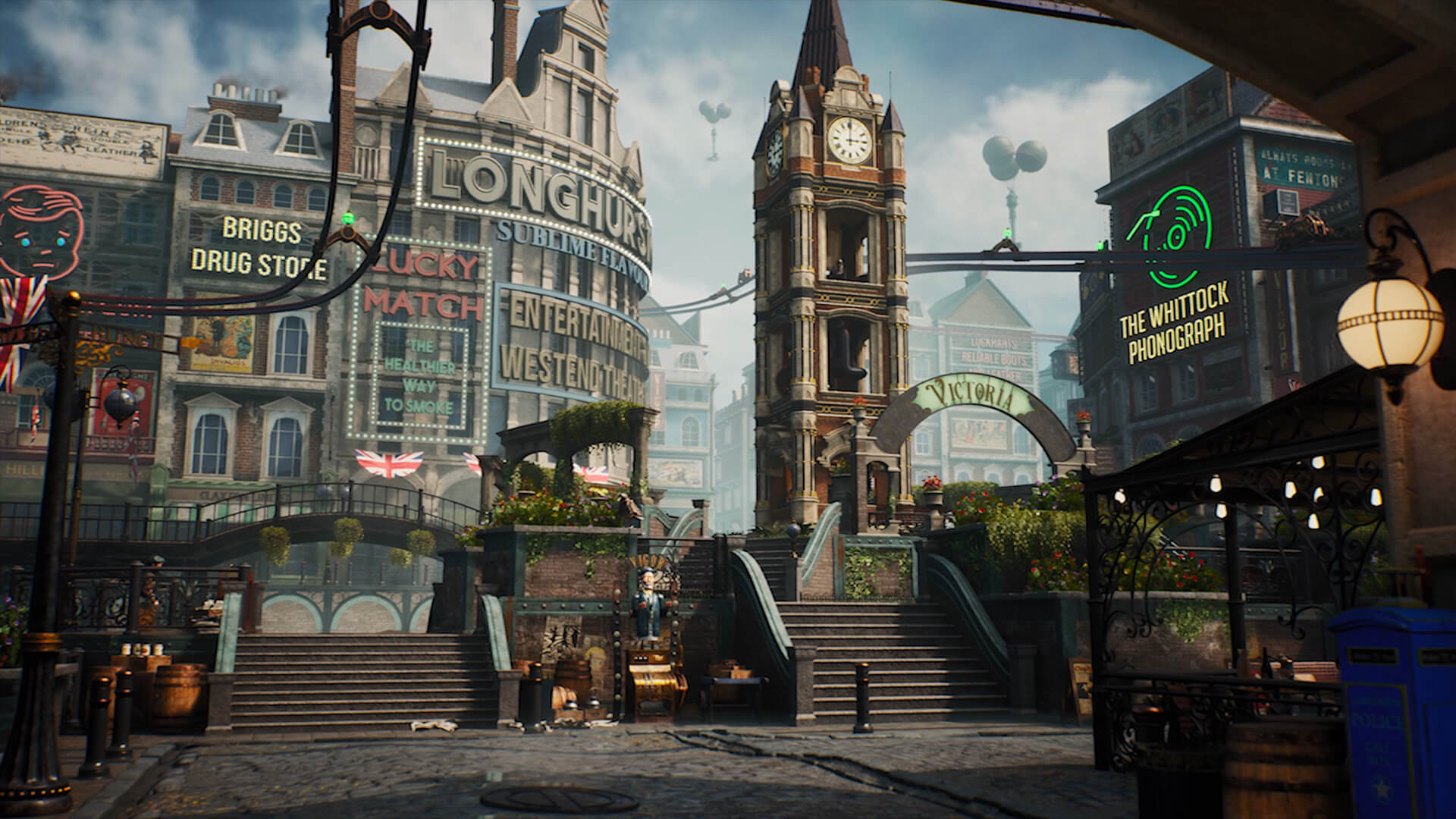Motion Graphics (evening - online)
Motion Graphics (evening - online)
Course details
Location
Start date
20th January 2026
Duration
12 weeks
Contact Time
Tuesday and Thursday evenings - 7:00pm -10:00pm GMT
Difficulty
Intermediate - requires a firm grasp of computer functionality
Fees
- £2,100 (for 2025 applications)
- £2,995 (new fee for 2026 applications)
Course overview
Get your career in motion!
Motion Design (or Motion Graphics) is a versatile skillset in the creative industries, that can be applied to a range of sectors such as film, TV, advertising, web, apps and games.
Our part-time course is designed to teach you the fundamentals of motion graphics, combining design and animation to create a variety of animated pieces in tutor-led sessions. You'll get hands on with the industry-standard software Adobe After Effects and Cinema 4D, completing exercises within each software to build up a good foundational knowledge with each that can be applied to your own work. The course is equally split between After Effects and Cinema 4D, so that you have a good understanding of how to build your own projects and the process used in professional work.
This course is an introduction to the software used in every motion design studio. You'll apply your skills to practical projects, learning to respond to short briefs, adapt to critique and hit deadlines. You’ll be led by industry-experienced tutors, who will give feedback and critique to the work you produce, as well as industry advice. You’ll also have access to plenty of resources, inspiration and assets. This course is ideal for those already working in digital creative fields who are looking to expand into a new discipline or simply get started with After Effects or 3D.
See also MA Motion Graphics.
Why choose this course
- Successful alumni - you'll join our community of thousands of Escapees, many of whom have gone on to work at some of the world’s top animation and VFX studios like Industrial Light & Magic or Framestore
- Fast-track learning - studying a short course allows you to learn new skills quickly, in a fast-paced environment
- Flexibility - evening classes allow you to study around your day-to-day life
- Portfolio - along with an Escape Studios Certificate of Completion, you'll leave with strong creative and technical skills that will allow you to develop or finalise great pieces of work for your showreel
- Study resources - as well as benefiting from our tutors’ experience from working in the industry, you’ll have access to plenty of resources, inspiration and assets. All of which you wouldn’t get from an online video tutorial
- Small class sizes - our tutors know that thorough feedback gives students the fastest route to improvement. Our evening classes are small enough that you can request feedback or technical support at any time.
Course modules
Introduction to After Effects
Week 1
- Creating your first animation
- Exporting with After Effects and Media Encoder
- Font basics
- Shape layers
- Using the graph editor
- Looping elements in After Effects
- Keyframe types and interpolation
- Folder structure
Typography and critical thinking
Week 2
- 3D layers and cameras
- Depth of field and lights in After Effects
- Critical thinking in motion design
- Title sequence case study
- Animating typefaces
- Alpha and luma mattes
- Layer styles
- Converting text to shapes or masks
- Textures
Ideas and pitching
Week 3
- Animating a character in After Effects
- Puppet pin tool and rigging
- Preparing artwork in Illustrator
- Squash and stretch
- Interpreting client briefs
- 12 principles of animation
- Creating moodboards and pitch decks
- Generating ideas in motion design
Expressions
Week 4
- Isometric animation
- Cinema 4D renderer
- Project workflow, timings and organisation
- Expressions
- Using master controls for better workflow
- Improving speed and confidence with timed animations
Camera tracking
Week 5
- Text animators
- Saving animation presets
- Using Premiere and Audition for audio
- Adobe Live link workflow
- Camera tracking
- Compositing
- Rotoscoping with roto brush and masks
Mixed media
Week 6
- Time displacement for kinetic typography
- Time remapping and posterising
- Cel animation in Photoshop
- Mixed media techniques and collage style in After Effects
- Main course animation critique
Cinema 4D
Week 7
- Cinema 4D interface
- Adding primitives to create a composition
- Animating a simple scene using keyframing, looping and dynamics
Motion graphic system and fields
Week 8
- Cloners and generators and how to use them
- Controlling effectors and other objects using fields
Modelling
Week 9
- Using primitives, generators and deformers to model basic shapes
- Edit mode
- Manipulating points, edges and polys to edit and sculpt polygonal geometry
Materials
Week 10
- PBR, material types, reflectance channel
- Megascans, bricks material, displacement
- Applying materials to prims and meshes with UV wrapping
- Rendering tests and adjust render settings
Lighting and rendering
Week 11
- Main light types, HDRI, 3-point studio lighting
- Common tricks like flags and gobos
- Adding camera animation
- Rendering a pre-supplied scene and/or text piece
After Effects for 3D
Week 12
- Compositing rendered animation in After Effects
- Track mattes
- Cineware extraction
- More After Effects for 3D
- Grading, FX and colour correction
More information
Entry requirements
Minimum requirements
We welcome and encourage applications from students with a variety of backgrounds, experiences and perspectives.
To study this short course, you must:
- Be over 18
- Have a good understanding of written and spoken English (we recommend a B2 level)
- Feel comfortable using a computer.
If you’d like to discuss your circumstances before applying, contact us!
Online study requirements
We can provide remote access to our workstations during teaching time. Due to availability restrictions, we highly advise you to have your own set up at home to study in your own time.
More things you’ll need:
- A strong internet connection
- Cloud storage or external hard drive to back up your work, 1TB+ recommended
- A three-button mouse or graphics tablet. Please note, the Wacom Intuos Pro range of tablets have the best support for our remote desktop software and provide the best experience.
- A computer microphone (and optionally a webcam)
- Note-taking materials.
If you have any questions about learning online or if you need help with what to buy, get in touch at hello@escapestudios.ac.uk.
How to apply
Contact us to register your interest.
Our Admissions Team will get in touch to take you through the next steps.
To apply for one of our short courses, you can complete an online application form, found on the relevant course page on our website. We will get in touch to take you through the next steps.
Spaces are limited and booked on a first come first served basis. We advise you to book in advance, ideally three months ahead, to make sure you save your spot on the course. We usually close applications around two weeks before the course start date.
As part of the application process, you will need to agree to our terms and conditions for your place on the course to be secured.
Fees and funding
Fees
- £2,100 (for 2025 applications)
- £2,995 (new fee for 2026 applications)*
*To maintain the level of quality and industry relevance our students expect, evening - online course fees will be adjusted in 2026 to reflect current market conditions including operational costs and market rates for qualified tutors.
Payment plans
We offer payment plan options for all courses. Following an initial deposit at registration stage, your chosen payment plan will break down your remaining fees into up to three instalments, to be paid before the end of the course.
Visit our admissions page for any questions about fees, funding and payment plans.
Teaching and learning
We pack a lot into each class of our evening courses, to be able to offer a learning option that is more flexible and fits in with your personal and work life. This means that contact time with your tutors will be intense learning and hands on. To make the most of this course, we recommend that you spend at least 10 hours working on your projects or practising your new skills in your own time each week.
Software
- After Effects
After Effects is the world’s most commonly-used software in animation and compositing. It is the jack-of-all-trades software that allows us to breathe life into vector illustrations, animate characters, employ VFX techniques such as set extension, particle effects, rotoscoping and keying, as well as combining passes from 3D software with all of the above, performing colour correction and image finishing. Our technical tuition starts and ends in After Effects. You will be confident in how to navigate the software, have produced several pieces of work, and learned how to perform crucial final adjustments on work before delivery.
- Cinema 4D
Cinema 4D is the most-used 3D animation software in the motion design industry. You will quickly learn how to translate the theories of animation, composition and design into appealing 3D scenes. You will also learn filmmaking techniques from cinematography within 3D, such as lighting, camera operation and mise-en-scene – vital to producing beautiful and arresting animation.
- Adobe Photoshop
- Adobe Illustrator
Career opportunities
With studios such as ManVsMachine, WeAreSeventeen and Future Deluxe all based in London, it is an excellent place from which to launch your career. Even as an online student, you’ll benefit from having your work critiqued by industry professionals aware of the standards and expectations of London's design studios.
This course is tailored to provide you with an arsenal of industry-standard knowledge and techniques that are in-demand in studios across the world. We aim to take beginners - ideally with prior experience as a designer or illustrator - to the level where they could work for a motion design studio. You'll leave us with a modest amount of video clips, but having the knowledge and skills to complete a competent portfolio at your own pace.
Motion designers can work in a variety of industries, from broadcast to creative agencies, as well as for animation studios or tech start-ups. These days, motion design is a desirable asset for any in-house creative department. In the film industry, you can work on film titles, UI design, graphics sequences or even VFX. In broadcast, visual effects, compositing and on-screen titles are all made using After Effects, particularly in smaller studios. With Cinema 4D and After Effects both having the ability to export to web-based formats, app developers are always looking for motion designers to add stylish animation to their platforms.
Follow in the footsteps of our successful alumni you've gone on to work for VFX studios like Industrial Light & Magic or creative agencies like Savage & Civil. Read some of our Escapee success stories.
Check out our Careers Guide for more information about career opportunities and progression routes.
)
)
Meet our industry-experienced tutors
They have industry experience working in broadcast, entertainment visuals, advertising, events and DVD menus. They’ve worked for clients including Paramount, HSBC, Sony, Universal, Conde Nast, Louis Vuitton, VISA and Take That (rigging puppets on their 2019 tour).
Student showcase
You just can’t beat the knowledge and expertise of the tutors along with their tailored feedback. It massively helps to learn from them when they’re just as enthusiastic as you about all things motion design. I believe the short course is brilliant value for money.






